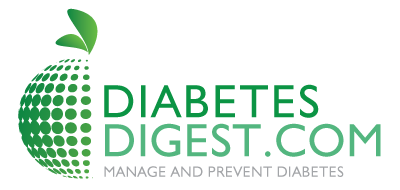The Importance of Regular Blood Glucose Monitoring

Blood glucose monitoring is one of the greatest inventions of our lifetime, right up there with insulin. Prior to blood glucose monitoring, only scientists and diabetes health care providers fully appreciated the value of self monitoring. If you were diagnosed in 1975, for example, you might hope that nothing bad was happening to your body, but without personal blood glucose meters, you were ignorant of what was really going on.
Before blood glucose monitoring, only people with a good education and money to pay for really healthy food, who followed a regular exercise plan, and had a doctor who actually educated them and watched them like a hawk, did well with their diabetes in the long term. These exceptional people, who believed what they were told, had excellent health insurance, read a lot about diabetes, and had supportive family or significant others, and lived long and healthy lives.
Avoiding diabetes complications, or delaying them for many years, is the greatest outcome of the use of blood glucose self-monitoring. It is definitely worth the effort to check blood sugar often, look at the trends in pre- and post-meal results, and discuss changing needs with a health care provider in order to develop strategies to improve diabetes control. This degree of diabetes care was not possible 45 years ago. Hypo- and hyperglycemia were always a constant threat in the past.
Accepting the diagnosis can be difficult for persons with Type 1 or Type 2 diabetes, but seeing accurate numbers is usually convincing. Compared to accepting the diagnosis, learning how to use a blood glucose meter is simple. Knowing that your blood sugar doesn’t have to be normal (60-100 mg/dl) all the time is helpful. Your doctor will give you target blood sugar levels for prior to eating and for 2 hours.after eating. This gives you a goal, not a perfect expectation. Doctors know that no one is perfect.
Since the advent of blood glucose monitoring, people with diabetes have more control over their lives. It is more possible to keep diabetes well under control. Your data is stored in the meter’s memory, so you can print it out, and analyze or compare results. Comparing your pre-breakfast blood sugars and 2 hour post-breakfast blood sugars over a period of time is the best way for you to choose what foods to have for breakfast, and what foods to avoid.
Share your blood sugar levels with your health care professional so they can help you get and keep your blood sugars in your target range. The more information you provide, the better your diabetes care plan. Be honest, even if your numbers aren’t great – your health care provider needs to know what’s really going on to help develop strategies for you to achieve your desired results.
One Touch meters are accurate with minimal discomfort when doing your finger stick.
Edwards provides the most accurate brands no cost to you. The newest One Touch Verio meter can even alert you to times when you fall outside of your range, and help identify what periods need attention to achieve optimal diabetes control.
Testing your blood sugar regularly is vital to the best diabetes control possible. You are the main person will determine the direction your health care will go. Having a chronic condition is difficult to think about; it’s up to you if you’ll be the healthiest you can be, or constantly struggling with your health.
You have to be honest with your health care provider or they can’t help you. Checking blood sugar if you have Type 1 means knowing where your glucose level is before eating, four times a day for most people. People with Type 2 don’t have to test as frequently, but it’s still important for you to know your daily trends and to change your activity and menu if your health care provider recommends in order to stay in range.












